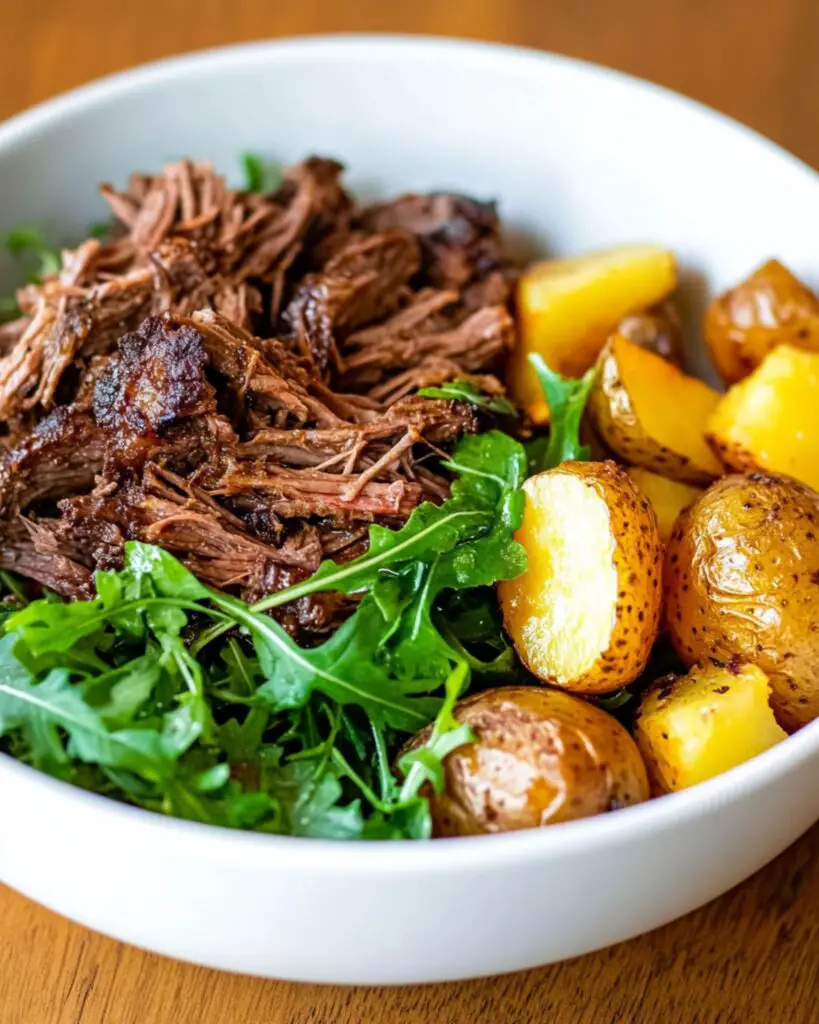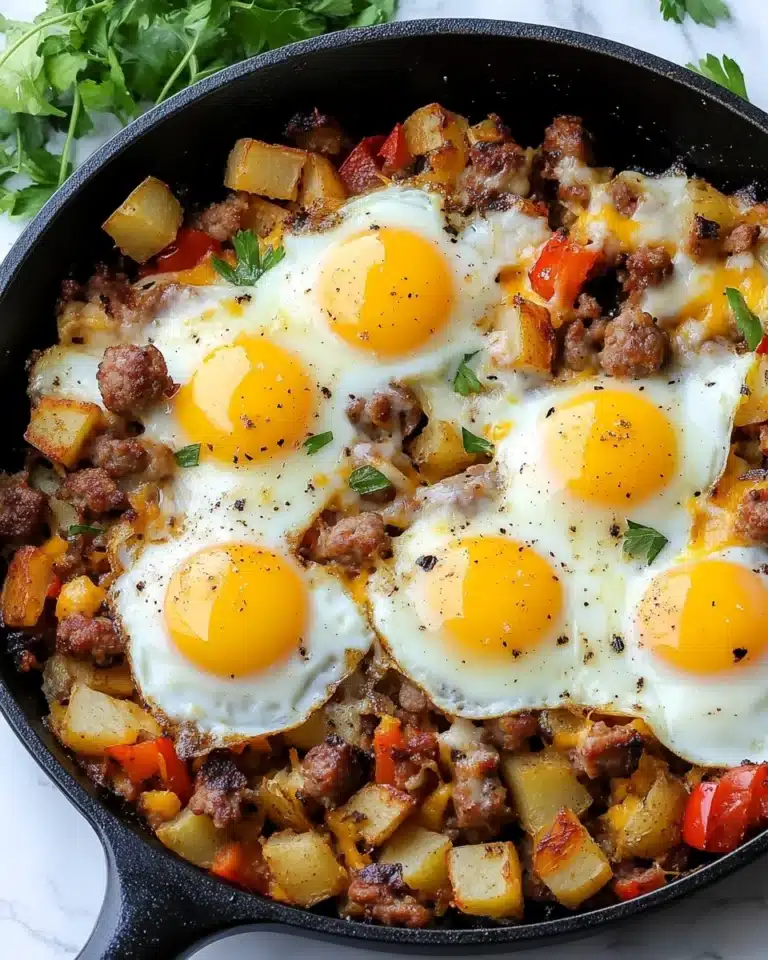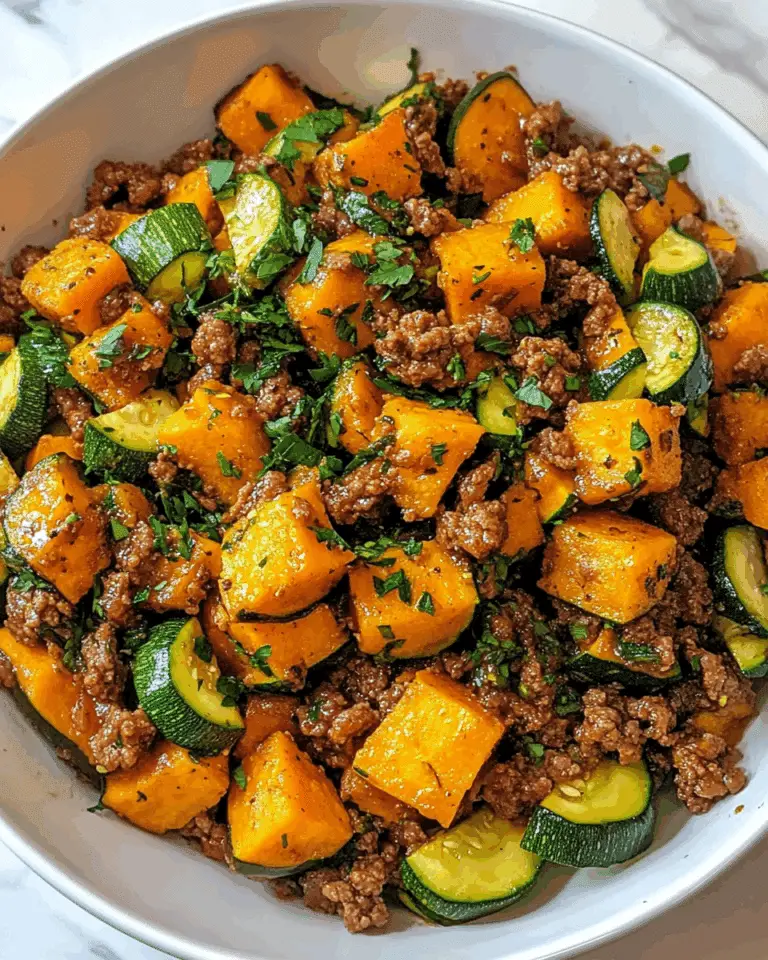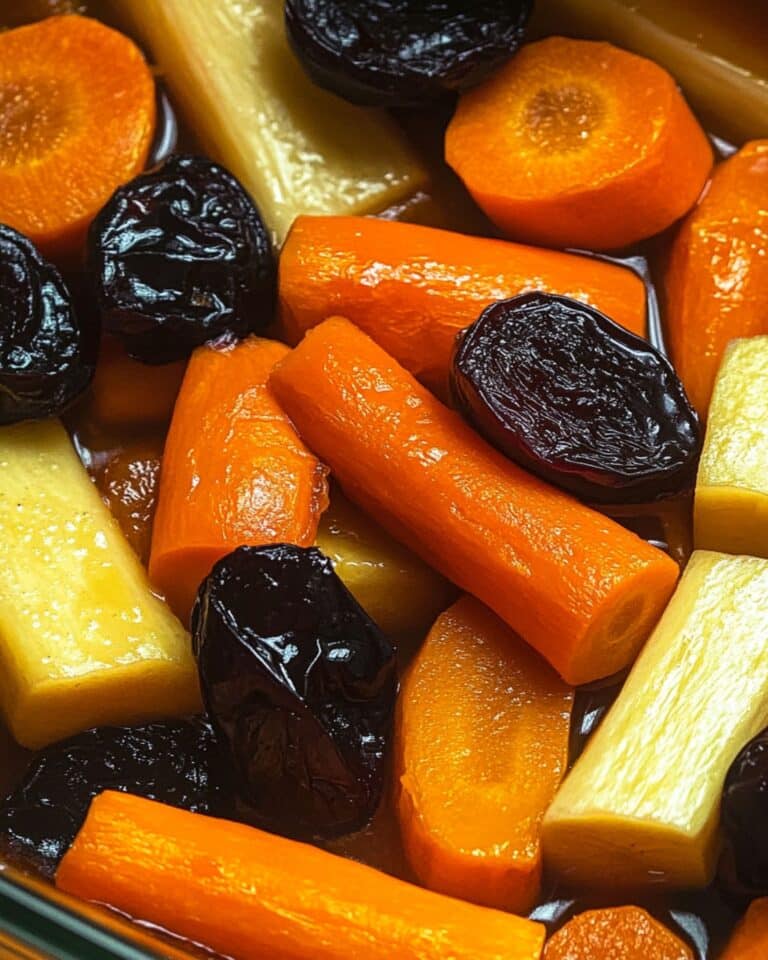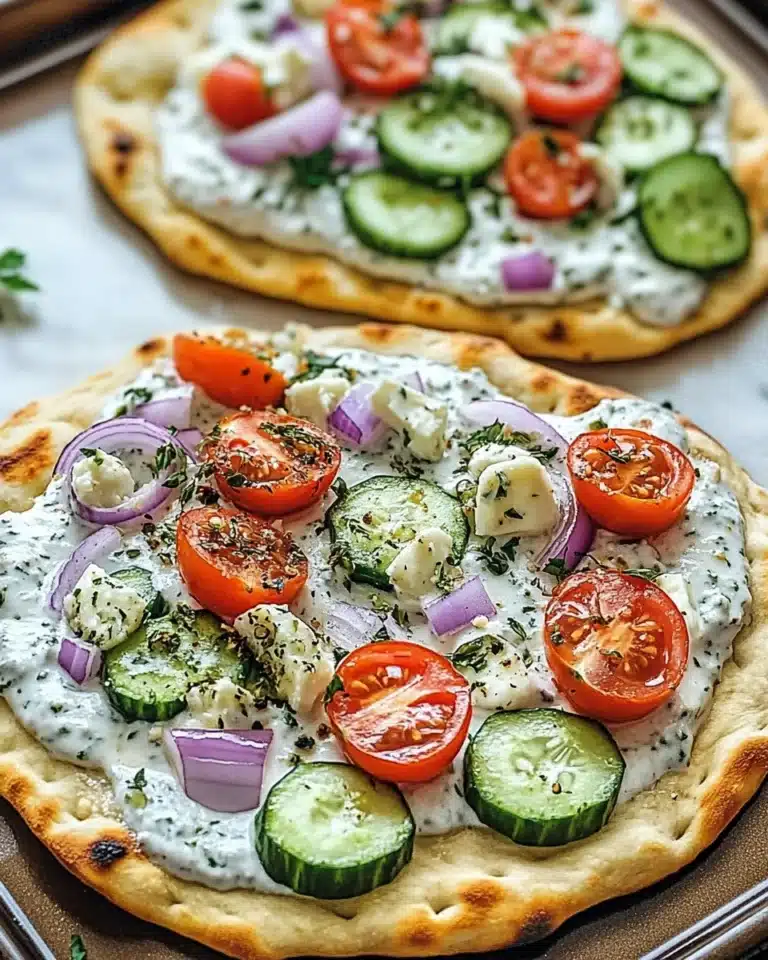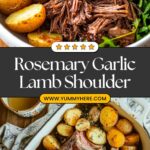This melt-in-your-mouth Rosemary Garlic Lamb Shoulder is a show-stopping centerpiece that’s surprisingly easy to prepare. The long, slow roasting transforms this humble cut into something truly spectacular – tender meat that falls off the bone, infused with aromatic herbs and garlic, all finished with a rich, velvety gravy. Despite its impressive results, this recipe requires minimal hands-on effort, making it perfect for both special occasions and comforting Sunday dinners.Why You’ll Love This Recipe.
Why You’ll Love This Recipe
- Foolproof Technique: Even if you’ve never cooked lamb before, this method guarantees success with its simple preparation and forgiving cooking process.
- Incredible Flavor Development: The slow roasting allows the garlic and herbs to fully penetrate the meat while the fat renders, creating a depth of flavor that simply can’t be achieved with quicker cooking methods.
- Impressive Yet Simple: Though it looks and tastes like you spent all day in the kitchen, the actual hands-on time is minimal – just marinate, place in the oven, and let time work its magic.
- That Gravy!: The pan drippings transform into possibly the most delicious gravy you’ll ever taste, capturing all the beautiful flavors that developed during cooking.
Ingredients You’ll Need
- Lamb Shoulder: The star of the show, bone-in lamb shoulder has beautiful marbling that melts during cooking, creating self-basting meat that becomes incredibly tender. The bone adds extra flavor to both the meat and gravy.
- Garlic: Freshly minced garlic infuses the lamb with aromatic flavor. Don’t skimp here – the garlic mellows beautifully during cooking.
- Rosemary: Fresh rosemary brings a wonderful piney, aromatic quality that pairs perfectly with lamb. It’s not just a garnish but a key flavor component.
- Oregano: Dried oregano adds an earthy depth that complements the stronger flavors of rosemary and garlic.
- Olive Oil: Use a good quality extra-virgin olive oil to help the herbs and garlic stick to the meat and aid in browning.
- Onions and Carrots: These vegetables serve multiple purposes – they elevate the lamb off the pan bottom, add flavor to the gravy, and become deliciously soft treasures to serve alongside.
- White Wine: Adds acidity and depth to the cooking liquid. The alcohol evaporates during cooking, leaving just the flavor.
- Water: Creates steam in the covered roasting environment, helping to keep the meat moist during the long cooking process.
- Flour: Thickens the gravy, giving it body and silky texture.
- Beef Stock: Forms the base of the gravy, adding richness and depth that complements the lamb drippings perfectly.
Note: You’ll find the complete list of ingredients, along with their exact measurements, in the printable recipe card at the bottom of this post.
Variations
Flavor Twists
- Moroccan Spiced: Swap the rosemary and oregano for a mixture of cumin, coriander, cinnamon, and a pinch of cayenne for a North African flavor profile.
- Lemon Herb: Add lemon zest to the herb mixture and place sliced lemons around the lamb during roasting for a bright, citrusy version.
- Red Wine: Replace the white wine with red for a deeper, more robust flavor profile.
Cooking Methods
- Slow Cooker: Transfer the same ingredients to a slow cooker and cook on low for 8 hours for an even more hands-off approach.
- Dutch Oven: If you don’t have a roasting pan with a lid, a large Dutch oven works perfectly.
How to Make Rosemary Garlic Lamb Shoulder
Step 1: Prepare and Marinate the Lamb
Preheat your oven to 180°C (350°F) or 160°C (325°F) for fan-forced ovens. In a large bowl, combine the minced garlic, fresh rosemary, dried oregano, sea salt flakes, cracked black pepper, and olive oil. Add the lamb shoulder and use your hands to thoroughly coat it with the marinade, making sure to get into all the crevices.
Step 2: Set Up the Roasting Pan
Arrange the quartered onions and carrot chunks in the bottom of a lidded roasting pan. Pour in the water and white wine. This creates a flavorful steam bath that will keep the lamb moist while infusing it with additional flavor.
Step 3: Position and Roast the Lamb
Place the marinated lamb on top of the vegetables, making sure to scrape any remaining marinade from the bowl onto the meat. Cover the roasting pan with its lid (or tightly with a double layer of foil if you don’t have a lid). Slide it into the preheated oven and let it roast undisturbed for 4 hours.
Step 4: Check for Tenderness
After 4 hours, check the lamb by attempting to pull some meat away with two forks. It should separate easily with minimal resistance. If it’s not quite there, cover it again and return it to the oven for additional time.
Step 5: Rest the Lamb
Once tender, carefully remove the lamb from the roasting pan using tongs (it will be very tender and likely to fall apart). Place it on a plate or board, loosely tent with foil, and let it rest for at least 15 minutes to allow the juices to redistribute throughout the meat.
Step 6: Make the Gravy
While the lamb rests, place the roasting pan with all its juices and vegetables directly on the stovetop over medium heat. Once it begins to simmer, whisk in the flour until dissolved (don’t worry about lumps at this stage). Pour in the beef stock and continue whisking for 3-4 minutes until the gravy thickens. Season with salt and pepper to taste.
Step 7: Strain the Gravy
Pour the gravy through a sieve into a jug or bowl, using the back of a spoon to press as much of the vegetable pulp through as possible. This creates a thick, smooth gravy packed with flavor.
Pro Tips for Making the Recipe
- Don’t Rush the Process: The long cooking time is essential for breaking down the tough connective tissues in the lamb shoulder.
- Season Generously: Lamb can handle bold flavors, so don’t be shy with the salt and herbs.
- Keep It Covered: Maintaining a tight seal on your roasting pan is crucial for tender results. The steam created inside works magic on the meat.
- Check Without Disturbing: If you need to check the lamb before the full cooking time, do so quickly to minimize heat loss.
- Rest is Non-Negotiable: The resting period allows the meat fibers to relax and reabsorb juices, resulting in more tender, flavorful meat.
How to Serve
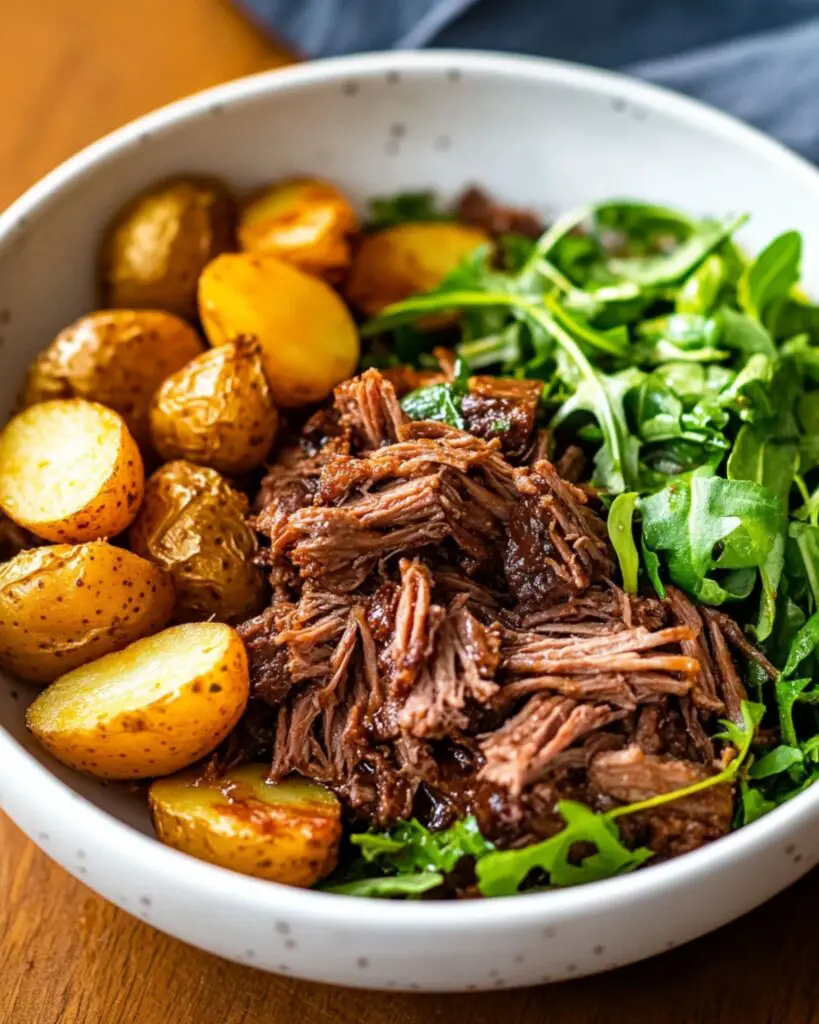
This succulent lamb shoulder is versatile enough to shine in multiple settings:
Classic Roast Dinner
Serve with roasted potatoes, steamed green vegetables, and plenty of that incredible gravy. The potatoes can be added to the roasting pan during the last hour of cooking for convenience.
Elegant Dinner Party
Pair with a creamy potato gratin, glazed baby carrots, and a light green salad dressed with vinaigrette. The contrast of textures elevates this rustic dish to dinner party status.
Casual Family Style
Place the whole lamb shoulder on a large platter surrounded by roasted vegetables. Let everyone help themselves, pulling off tender chunks of meat directly from the bone.
Wine Pairing
A medium-bodied red wine like Syrah/Shiraz or Grenache pairs beautifully with the rich, herb-infused flavors of the lamb.
Make Ahead and Storage
Make Ahead
You can prepare this dish up to a day ahead. Complete the cooking process, then refrigerate the lamb and strained gravy separately. Reheat the lamb, covered with foil, in a 150°C (300°F) oven for about 30 minutes, and warm the gravy on the stovetop.
Storing Leftovers
Leftover lamb will keep in an airtight container in the refrigerator for up to 3 days. Store the gravy separately in its own container.
Freezing
The cooked lamb freezes beautifully. Shred or slice it, then store in freezer-safe containers for up to 3 months. The gravy can also be frozen separately in airtight containers or ice cube trays for portion control.
Reheating
For the best texture, reheat the lamb gently. Place in a covered dish with a splash of water or stock, then warm in a 150°C (300°F) oven until heated through. Alternatively, reheat in a microwave on medium power with a splash of liquid to prevent drying out.
FAQs
-
Can I use boneless lamb shoulder instead?
Yes, boneless lamb shoulder works perfectly in this recipe. You may need to adjust the cooking time slightly (usually a bit less), but the same tenderness test applies – the meat should easily pull apart with two forks when it’s done.
-
What if I don’t have a lidded roasting pan?
No problem! A regular roasting dish covered tightly with a double layer of heavy-duty aluminum foil works just as well. The key is creating a seal that keeps the moisture inside during the long cooking process.
-
Can I make this recipe with a different cut of lamb?
While you can use this method with lamb leg, the shoulder is ideal because of its higher fat content and connective tissue, which break down during slow cooking to create that melt-in-your-mouth texture. Leaner cuts won’t be quite as succulent.
-
My gravy is too thin. How can I thicken it?
If your gravy hasn’t thickened enough after simmering, mix a tablespoon of flour or cornstarch with a little cold water to create a slurry, then gradually whisk it into the simmering gravy until you reach your desired consistency.
Final Thoughts
This Rosemary Garlic Lamb Shoulder recipe transforms a humble cut of meat into something truly special through the magic of slow cooking. There’s something deeply satisfying about setting a gorgeous, aromatic dish in the center of your table that required more patience than effort. The way the meat just falls off the bone and melts in your mouth, complemented by that richly flavored gravy, makes this a recipe worth adding to your regular rotation. Whether you’re cooking for a special occasion or simply want to elevate an ordinary weekend, this lamb shoulder delivers impressive results every time.
Print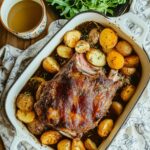
Rosemary Garlic Lamb Shoulder with Gravy Recipe
- Prep Time: 15 minutes
- Cook Time: 4 hours
- Total Time: 4 hours 10 minutes
- Yield: 6–8
- Category: Main-course
- Method: Roasting
- Cuisine: Mediterranean
- Diet: Gluten Free
Description
This Rosemary Garlic Lamb Shoulder with Gravy is a tender, flavorful main-course perfect for gatherings or special occasions. The lamb is marinated in a fragrant mix of garlic, rosemary, oregano, and olive oil, then slow-roasted to perfection atop a bed of onions and carrots. Finished with a rich, savory gravy made from pan juices and beef stock, this dish is both impressive and satisfying. Serve it with roasted potatoes and a fresh leafy salad for a memorable meal.
Ingredients
Lamb
- 1.3–1.8 kg (2 lb 14 oz-4 lb) bone-in lamb shoulder
- 2 tbsp freshly minced garlic
- 1 tbsp freshly chopped rosemary
- 1 tsp dried oregano
- 2 tsp sea salt flakes
- 1/2 tsp cracked black pepper
- 1/4 cup (60 ml) extra-virgin olive oil
- 2 brown onions, cut into quarters
- 2 carrots, peeled and cut into large chunks
- 1 cup (250 ml) water
- 1/2 cup (125 ml) dry white wine (optional)
Gravy
- 2 tbsp plain (all-purpose) flour
- 2 cups (500 ml) beef stock
- Sea salt flakes, to taste
- Cracked black pepper, to taste
To Serve
- Rosemary sprigs, to garnish
- Roasted potatoes
- Green leafy salad
Instructions
- Preheat the Oven
Preheat your oven to 180°C (350°F) or 160°C (325°F) if using a fan-forced oven to ensure it reaches the correct temperature for slow roasting. - Marinate the Lamb
In a large bowl or on a plate, combine the lamb shoulder with minced garlic, chopped rosemary, oregano, salt, pepper, and olive oil. Massage the marinade evenly all over the lamb using your hands, ensuring all sides are well coated. - Prepare the Roasting Pan
Place the quartered onions and carrot chunks in the base of a lidded roasting pan or large baking dish. Pour in the water and, if using, add the dry white wine. Place the marinated lamb on top of the vegetables, along with any residual marinade. Cover with the lid or tightly with a double layer of foil if using an uncovered dish. - Roast the Lamb
Transfer the covered pan to the preheated oven and roast for 4 hours. The long, slow cook ensures the lamb becomes incredibly tender. If it does not pull apart easily after 4 hours, cover and return to the oven until tender. - Rest the Lamb
Once the lamb is done, carefully transfer it from the pan using two sets of tongs (it will be very tender and may fall apart). Place the lamb on a plate or chopping board, loosely cover with foil, and let it rest for at least 15 minutes to reabsorb juices. - Prepare the Gravy
Set the roasting pan (or transfer contents to a flameproof pan) on the stovetop over medium heat. Whisk in the flour—don’t worry if lumps form initially. Once the flour is dissolved, gradually add the beef stock while whisking. Cook for 3–4 minutes, or until the gravy thickens. Season with salt and pepper to taste. - Strain and Finish the Gravy
Pour the finished gravy through a sieve into a large jug or bowl, pressing the vegetables through with the back of a spoon to extract extra flavor and body. You should be left with a rich, thick gravy. - Serve
Arrange the lamb on a serving platter, garnish with rosemary sprigs, and serve with roasted potatoes and a fresh green leafy salad. Pour gravy over the lamb or serve alongside.
Notes
- Bone-in lamb shoulder is recommended for maximum flavor and tenderness.
- You can add potatoes to the roasting pan halfway through cooking for a complete one-pan meal.
- If lamb is not fork-tender after the initial cook time, give it another 30-60 minutes as needed.
- The wine can be omitted or substituted with extra water or stock if preferred.
- Sieve the gravy well to achieve a smooth, luscious texture.
Nutrition
- Serving Size: 1/6th of recipe
- Calories: 510
- Sugar: 5g
- Sodium: 950mg
- Fat: 33g
- Saturated Fat: 12g
- Unsaturated Fat: 19g
- Trans Fat: 0g
- Carbohydrates: 11g
- Fiber: 2g
- Protein: 39g
- Cholesterol: 120mg


